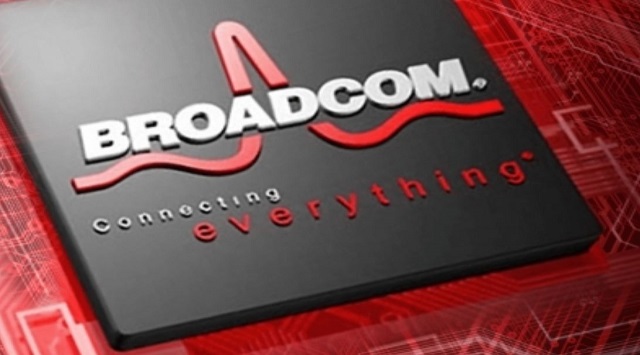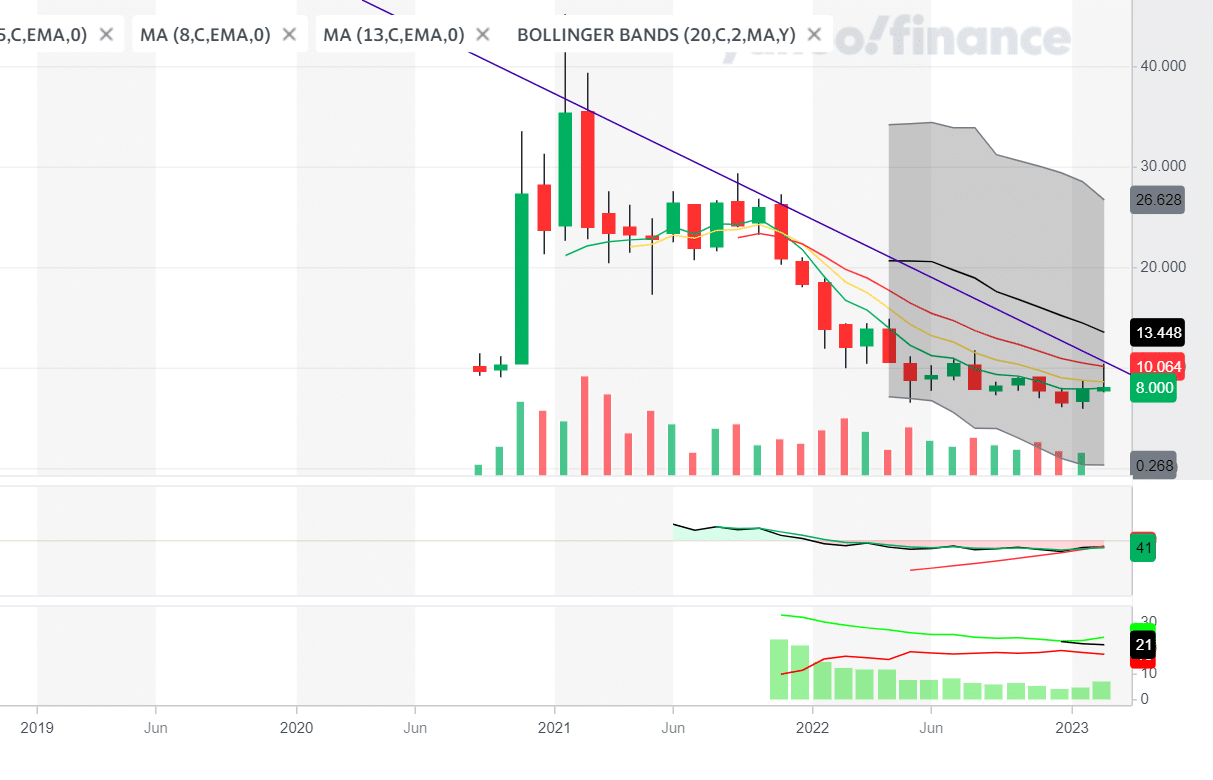Broadcom's VMware Acquisition: AT&T Reveals Potential 1,050% Cost Surge

Table of Contents
AT&T's VMware Dependence and the Implications of the Broadcom Acquisition
AT&T’s extensive reliance on VMware products forms the crux of its projected cost increase. Understanding this dependence is critical to grasping the full impact of Broadcom’s acquisition.
Current VMware Infrastructure within AT&T
AT&T's network and services heavily depend on a robust VMware infrastructure. Their current investment includes:
- VMware vSphere: The core virtualization platform managing a significant portion of AT&T's servers and applications.
- NSX: Their network virtualization layer, crucial for managing and securing their vast network.
- vSAN: Their software-defined storage solution, managing substantial data storage needs.
- Other VMware Products: Numerous other VMware tools and services are likely integrated into AT&T's operations, further increasing their reliance on the platform.
The exact current spending on these VMware products remains undisclosed, but it is undoubtedly substantial, given AT&T's scale and the critical role virtualization plays in their operations. This existing large investment makes the projected increase particularly alarming.
Broadcom's History of Pricing Practices
Broadcom has a history of acquisitions followed by price increases for acquired products. This pattern raises serious concerns regarding AT&T's future costs. Examining past acquisitions reveals a consistent trend:
- Post-Acquisition Price Hikes: Following several previous acquisitions, Broadcom has implemented significant price increases for acquired products, often citing increased R&D and improved functionality as justifications.
- Market Consolidation Strategies: This pricing strategy can be interpreted as a move towards market consolidation, maximizing profits by leveraging their dominant market position after acquisitions.
- Profit Maximization: The ultimate goal appears to be maximizing profitability from acquired assets, which often results in less favorable terms for existing customers.
Projected Cost Increase Breakdown
The projected 1050% cost surge for AT&T isn't a simple across-the-board increase; it reflects a complex interplay of factors impacting various VMware products:
- Per-Product Cost Analysis: The increase likely varies across different VMware products, with some seeing more significant price jumps than others. vSphere, given its central role, might face the most substantial hike.
- Budget Impact: This massive cost increase could seriously impact AT&T’s budget, potentially forcing cutbacks in other areas or impacting investment in future technologies.
- Comparison to Alternatives: The analysis should also compare the potential cost increase with the price of migrating to alternative solutions, including cloud platforms or open-source technologies.
Potential Alternatives for AT&T and Other VMware Clients
Facing such a potentially devastating cost increase, AT&T has several options to consider:
Exploring Cloud Migration Strategies
Migrating to cloud providers like AWS, Azure, or Google Cloud represents a significant undertaking but could offer long-term cost savings.
- Advantages: Potential cost optimization, scalability, and enhanced infrastructure management.
- Disadvantages: Significant upfront investment, data migration challenges, potential vendor lock-in with cloud providers.
- Cost Comparisons: A thorough cost-benefit analysis comparing VMware's potential future pricing with cloud alternatives is crucial.
Open-Source Alternatives to VMware
Exploring open-source virtualization options, such as Kubernetes, offers a potentially cost-effective alternative.
- Advantages: Lower licensing costs, greater flexibility, and control over the infrastructure.
- Disadvantages: Requires significant technical expertise for implementation and maintenance; potentially higher initial setup costs and ongoing operational overhead.
- Suitability for AT&T's Scale: The scalability and reliability of open-source solutions at AT&T’s scale need careful evaluation.
Negotiating with Broadcom
Given AT&T's size and influence, negotiating favorable terms with Broadcom is a viable strategy:
- Leveraging AT&T's Size: AT&T's significant spending power offers leverage in negotiations.
- Negotiation Strategies: This may involve long-term contracts with price guarantees or bundled service packages.
- Challenges: Negotiating with Broadcom might prove challenging given their history and the strength of their market position.
The Wider Implications of the Broadcom-VMware Deal
The Broadcom-VMware deal extends far beyond AT&T's situation, having significant implications for the broader technology landscape.
Impact on the Competitive Landscape
The acquisition will likely reshape the enterprise software market significantly.
- Reduced Competition: The merger could lead to reduced competition, potentially stifling innovation.
- Impact on Innovation: With less competition, the incentive to innovate might decrease, negatively affecting the advancement of virtualization technologies.
- Consequences for Smaller Companies: Smaller companies competing with VMware could face increased challenges, potentially leading to consolidation or market exit.
Regulatory Scrutiny
The acquisition faces potential regulatory scrutiny concerning antitrust concerns.
- Antitrust Concerns: Concerns exist that the merger could create a monopoly, harming competition and potentially consumers.
- Potential Delays or Blocks: Regulatory investigations could delay or even block the completion of the acquisition.
- Impact on the Deal's Completion: The outcome of these investigations will significantly influence the final form and impact of the merger.
Conclusion: Navigating the Post-Acquisition Landscape of Broadcom and VMware
The Broadcom VMware acquisition presents both challenges and opportunities for companies like AT&T and other large VMware users. The projected 1050% cost increase underscores the need for thorough planning and consideration of alternative solutions. This situation highlights the crucial need for proactive strategies regarding cloud migration, open-source alternatives, and effective contract negotiation. The impact extends beyond individual companies, shaping the competitive landscape and prompting regulatory scrutiny. To mitigate the risks associated with the Broadcom VMware acquisition, it's essential to stay informed about the latest developments and explore options to optimize your enterprise software strategy. Learn more about mitigating the risks of the Broadcom VMware acquisition and explore alternative solutions for your business. Stay informed about the latest developments in VMware pricing and cloud migration strategies.

Featured Posts
-
 Wynne Evans Dropped From Go Compare Advert After Strictly Scandal
May 10, 2025
Wynne Evans Dropped From Go Compare Advert After Strictly Scandal
May 10, 2025 -
 Recent Developments In Thailands Transgender Rights Movement Bangkok Post
May 10, 2025
Recent Developments In Thailands Transgender Rights Movement Bangkok Post
May 10, 2025 -
 Palantir Stock Before May 5th Wall Streets Prediction And What It Means For Investors
May 10, 2025
Palantir Stock Before May 5th Wall Streets Prediction And What It Means For Investors
May 10, 2025 -
 Britannian Kruununperimysjaerjestys 2024 Taessae On Uusi Lista
May 10, 2025
Britannian Kruununperimysjaerjestys 2024 Taessae On Uusi Lista
May 10, 2025 -
 U S Federal Reserve Economic Outlook And Implications For Interest Rates
May 10, 2025
U S Federal Reserve Economic Outlook And Implications For Interest Rates
May 10, 2025
